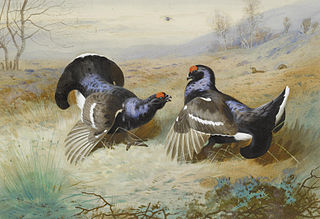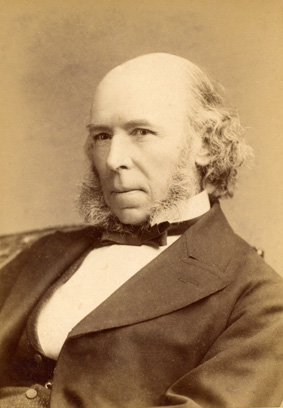
Natural selection is the differential survival and reproduction of individuals due to differences in phenotype. It is a key mechanism of evolution, the change in the heritable traits characteristic of a population over generations. Charles Darwin popularised the term "natural selection", contrasting it with artificial selection, which is intentional, whereas natural selection is not.

Reproduction is the biological process by which new individual organisms – "offspring" – are produced from their "parent" or parents. There are two forms of reproduction: asexual and sexual.

Kin selection is a process whereby natural selection favours a trait due to its positive effects on the reproductive success of an organism's relatives, even when at a cost to the organism's own survival and reproduction. Kin selection can lead to the evolution of altruistic behaviour. It is related to inclusive fitness, which combines the number of offspring produced with the number an individual can ensure the production of by supporting others. A broader definition of kin selection includes selection acting on interactions between individuals who share a gene of interest even if the gene is not shared due to common ancestry.

Group selection is a proposed mechanism of evolution in which natural selection acts at the level of the group, instead of at the level of the individual or gene.

David Lambert Lack FRS was a British evolutionary biologist who made contributions to ornithology, ecology, and ethology. His 1947 book, Darwin's Finches, on the finches of the Galapagos Islands was a landmark work as were his other popular science books on Life of the Robin and Swifts in a Tower. He developed what is now known as Lack's Principle which explained the evolution of avian clutch sizes in terms of individual selection as opposed to the competing contemporary idea that they had evolved for the benefit of species. His pioneering life-history studies of the living bird helped in changing the nature of ornithology from what was then a collection-oriented field. He was a longtime director of the Edward Grey Institute of Field Ornithology at the University of Oxford.

George Christopher Williams was an American evolutionary biologist.

"Survival of the fittest" is a phrase that originated from Darwinian evolutionary theory as a way of describing the mechanism of natural selection. The biological concept of fitness is defined as reproductive success. In Darwinian terms, the phrase is best understood as "survival of the form that in successive generations will leave most copies of itself."
Fecundity is defined in two ways; in human demography, it is the potential for reproduction of a recorded population as opposed to a sole organism, while in population biology, it is considered similar to fertility, the natural capability to produce offspring, measured by the number of gametes (eggs), seed set, or asexual propagules.

Reproductive success is an individual's production of offspring per breeding event or lifetime. This is not limited by the number of offspring produced by one individual, but also the reproductive success of these offspring themselves.

Adaptation and Natural Selection: A Critique of Some Current Evolutionary Thought is a 1966 book by the American evolutionary biologist George C. Williams. Williams, in what is now considered a classic by evolutionary biologists, outlines a gene-centered view of evolution, disputes notions of evolutionary progress, and criticizes contemporary models of group selection, including the theories of Alfred Emerson, A. H. Sturtevant, and to a smaller extent, the work of V. C. Wynne-Edwards. The book takes its title from a lecture by George Gaylord Simpson in January 1947 at Princeton University. Aspects of the book were popularised by Richard Dawkins in his 1976 book The Selfish Gene.

Vero Copner Wynne-Edwards, CBE, FRS, FRSE was an English zoologist. He was best known for his advocacy of group selection, the theory that natural selection acts at the level of the group.
The gene-centered view of evolution, gene's eye view, gene selection theory, or selfish gene theory holds that adaptive evolution occurs through the differential survival of competing genes, increasing the allele frequency of those alleles whose phenotypic trait effects successfully promote their own propagation. The proponents of this viewpoint argue that, since heritable information is passed from generation to generation almost exclusively by DNA, natural selection and evolution are best considered from the perspective of genes.
Life history theory (LHT) is an analytical framework designed to study the diversity of life history strategies used by different organisms throughout the world, as well as the causes and results of the variation in their life cycles. It is a theory of biological evolution that seeks to explain aspects of organisms' anatomy and behavior by reference to the way that their life histories—including their reproductive development and behaviors, post-reproductive behaviors, and lifespan —have been shaped by natural selection. A life history strategy is the "age- and stage-specific patterns" and timing of events that make up an organism's life, such as birth, weaning, maturation, death, etc. These events, notably juvenile development, age of sexual maturity, first reproduction, number of offspring and level of parental investment, senescence and death, depend on the physical and ecological environment of the organism.
Fisher's principle is an evolutionary model that explains why the sex ratio of most species that produce offspring through sexual reproduction is approximately 1:1 between males and females. A. W. F. Edwards has remarked that it is "probably the most celebrated argument in evolutionary biology".
Evolutionary aesthetics refers to evolutionary psychology theories in which the basic aesthetic preferences of Homo sapiens are argued to have evolved in order to enhance survival and reproductive success.

The following outline is provided as an overview of and topical guide to evolution:
Fecundity selection, also known as fertility selection, is the fitness advantage resulting from selection on traits that increases the number of offspring. Charles Darwin formulated the theory of fecundity selection between 1871 and 1874 to explain the widespread evolution of female-biased sexual size dimorphism (SSD), where females were larger than males.
Reciprocal altruism in humans refers to an individual behavior that gives benefit conditionally upon receiving a returned benefit, which draws on the economic concept – ″gains in trade″. Human reciprocal altruism would include the following behaviors : helping patients, the wounded, and the others when they are in crisis; sharing food, implement, knowledge.
The terminal investment hypothesis is the idea in life history theory that as an organism's residual reproductive value decreases, its reproductive effort will increase. Thus, as an organism's prospects for survival decreases, it will invest more in reproduction. This hypothesis is generally supported in animals, although results contrary to it do exist.
In life history theory, the cost of reproduction hypothesis is the idea that reproduction is costly in terms of future survival and reproduction. This is mediated by various mechanisms, with the two most prominent being hormonal regulation and differential allocation of internal resources.













